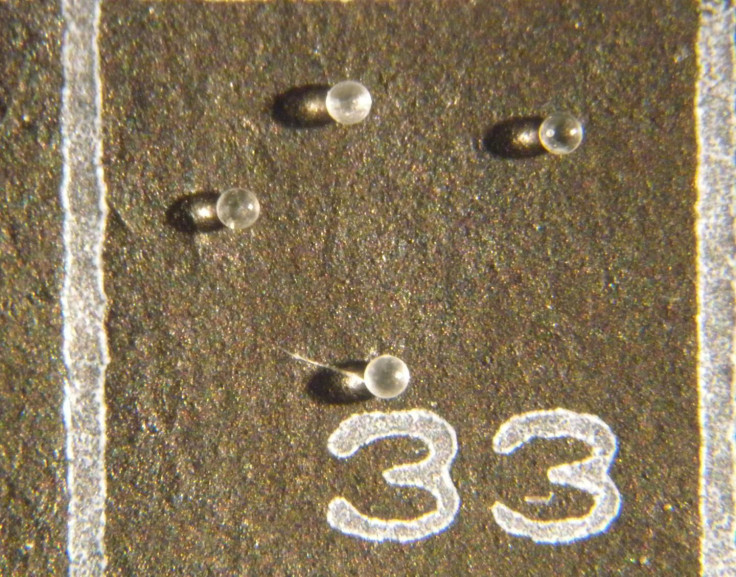'Cosmic Pearls' From Ancient Meteorite Found In Florida Clams

Tiny glass beads were found in fossil clams from a quarry in Sarasota County, Florida. Mike Meyer, an assistant professor of Earth systems science at the Harrisburg University in Pennsylvania, said these are evidence of an ancient meteorite.
Meyer discovered these tiny objects in 2006, when he was a University of South Florida undergraduate student conducting a fieldwork project led by Roger Portell, the Florida Museum of Natural History’s invertebrate paleontology collections director.
The project involved systematically collecting fossils from the shell-packed walls of the quarry, whose cross-section reveals the geological history of Florida over the last few million years.
Meyer, who now works as an assistant professor of Earth systems science at the Harrisburg University in Pennsylvania, was looking for the shells of single-celled organisms called benthic foraminifera when he noticed the translucent glassy balls that are smaller than the grains of salt.
Meyer found the objects odd since the sand grains are kind of lumpy, potato-shaped and he kept finding tiny perfect spheres. He send inquiries to various researchers but no one could tell him what these objects were, so he just decided to keep 83 of these spheres in a small box.
After more than a decade, he decided to conduct his own research.
He analyzed the physical features and elemental makeup of these spheres and found evidence these are of extraterrestrial origin.
The beads turned out to be microtektites, particles that form when an extraterrestrial object crashes into Earth, sending molten debris into the atmosphere where they cool and recrystallize before falling back to the surface.
Tests also suggest these cosmic pearls have traces of exotic metals, which back up the idea they are microtektites.
Researchers said that these are the first documented microtektites found in Florida and likely the first to be found from fossil shells.
“Based on their physical characteristics and elemental compositions these are likely microtektites or a closely related type of material,” Meyer and colleagues wrote in their study, which was published in Meteoritics and Planetary Science.
The objects also contain high amounts of sodium, which makes them different from other impact debris. Salt is highly volatile and boils off when hurtled into the atmosphere at high speed.
"This high sodium content is intriguing because it suggests a very close location for the impact," Meyer said. "Or at the very least, whatever impact created it likely hit a very large reserve of rock salt or the ocean. A lot of those indicators point to something close to Florida."
The microtektites were recovered from four different depths in the quarry, with each layer representing a distinct period of time.
Portell thinks the spheres are the products of one or more small previously unknown meteorite impacts, which may have occurred on or near the Florida Platform.
© Copyright IBTimes 2025. All rights reserved.





















